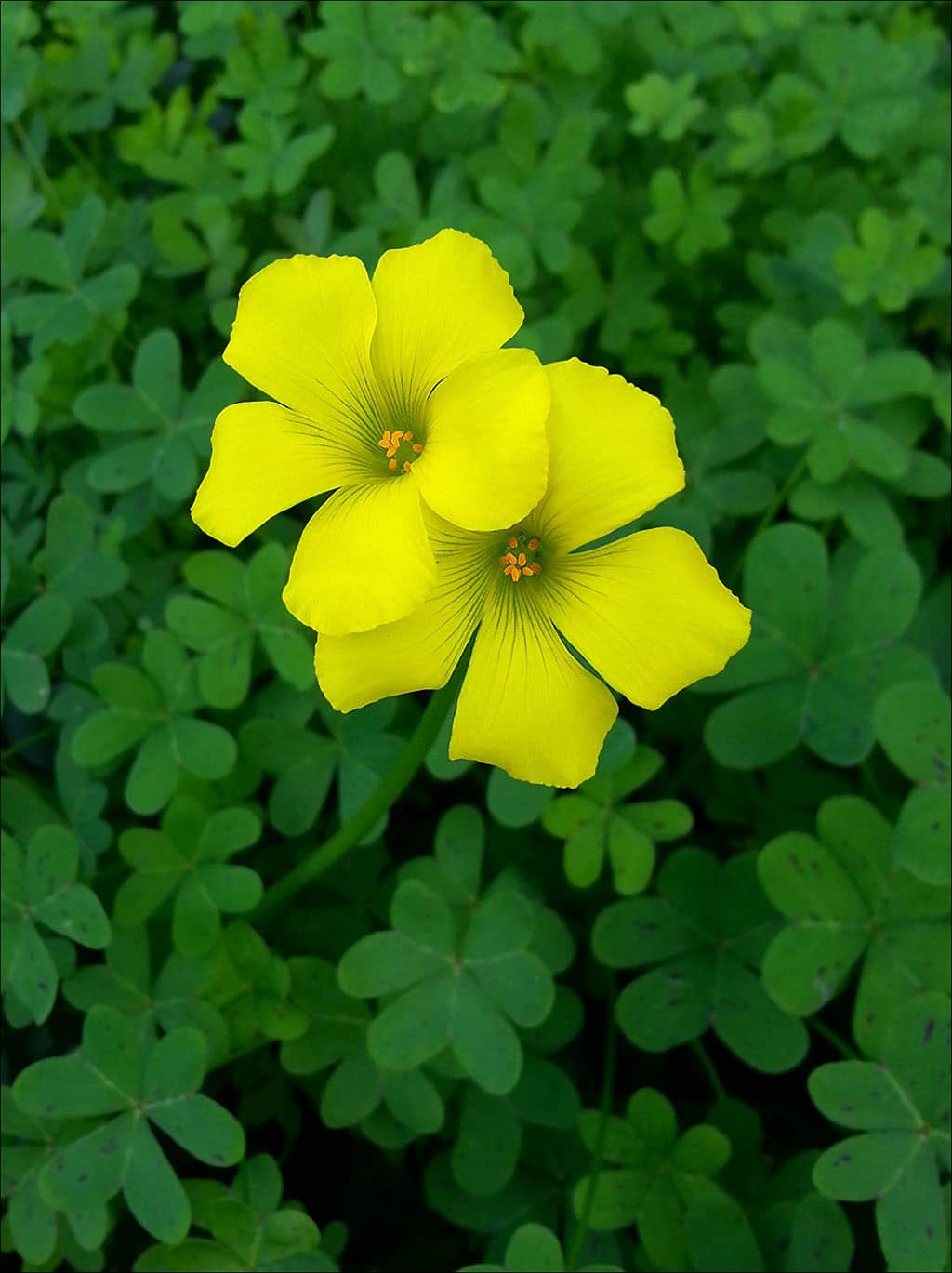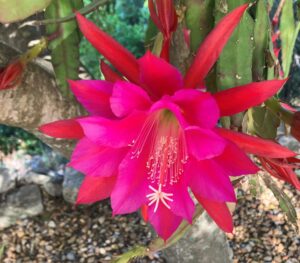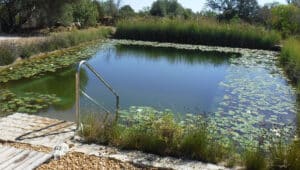Oxalis pes-caprae (azedas) from South Africa grows in our Algarve gardens and clothes the fields and landscape with its bright green foliage and yellow flowers following the first autumn rains.
The genus Oxalis was established by Linnaeus in 1753. The name Oxalis comes from the Greek oxis, which means acid, referring to the sour-tasting oxalic acid sap of some species which prevents its use as a food source.
The genus occurs worldwide with 800 species found in South America. In South Africa, the majority of the 200 species occur in the winter-rainfall region of the Northern and Western Cape provinces. There are many decorative species, with flower colour varying from deep pink, to white and yellow. These can be grown in pots and containers for added impact.
This Oxalis species has gradually become more widespread around the world and has attracted more attention from professional botanists, gardeners and landscapers. It is a classic successful invasive plant and is listed on the Invasive Plant database for Portugal.
Over time, small patches become larger, overwhelm gardens and will suffocate new plants if left. Research for effective ways to combat these infestations revealed that it had become a serious problem in many other parts of the world – France, California, Canary Islands, Turkey, Malta, Mallorca, Cyprus, Spain, Israel, Morocco and Australia have invasive populations.

Many papers and articles deal with the possible ways in which it was introduced and how it spreads into new areas. Rather than accidentally arriving when humans moved around the world, this plant seems to have been intentionally introduced as an ornamental plant. Indeed, often when people complain about this pest, you can find others commenting “but it’s so pretty!”.
In the past, knowing that this species grows from underground bulbils after a summer dormancy seemed to be all that was known. These are small bulb-like structures, produced in an axil (where a leaf attaches to a stem), on a flowering shoot, or on the roots. Many Oxalis plants produce bulbils, which form a new plant that is an exact replica of the original. The dormancy of these species may be in winter or summer, depending on where they originate.
Many assumptions exist about the bulbils of O. pes-caprae – that they are persistent and that they multiply like true bulbs. However, they behave very differently to those and from other Oxalis species. Understanding this is the key to controlling their spread.
This species survives the summer dry period by means of the bulbils it forms toward the end of its growth cycle, having exhausted the bulbil from which it grew in response to rainfall in autumn. It also has an unusual, white tuber-like ‘contractile root’ that can pull the bulbil deeper into the soil. This ‘contractile root’ lasts only for the growing season leaving just the newly-created bulbils. An interruption to this bulbil growth cycle gives hope for control.
The lifecycle of Oxalis pes-caprae
Summer: Dormant bulbils are lying in the dry summer soil.
Autumn/Winter: Following rainfall, each bulbil can produce a shoot and a root. As they grow, the original bulbil is exhausted completely (this fact is very important!). A clump of small leaves appears on top of the soil – these are tightly packed together making a sort of ‘knot’ above the ground surface. While it is more humid, the temperatures are dropping, and this clump slowly increases.
This is the time to intervene. With your fingers, find the root just under the ‘knot’ of leaf bases, then pull. Inspect the long root to see if bulbils have already formed to gauge your timing. Obviously, this is easier in smaller spaces such as vegetable plots etc.
Winter: During any break in the cold weather, this clump may start to increase, adding more and more leaves. At this point, it is easy for the gardener to ignore them, promising to get to them later. Also, they make a nice green carpet where the soil was once bare and dusty.
Spring: Suddenly, the season has progressed rapidly, and we are reminded of the Oxalis by their bright yellow flowers. The improving weather also inspires a desire to work in the garden, so, pulling the Oxalis is on the agenda.
But the problem is that, at this point, it has already produced new bulbils in the soil and perhaps aboveground bulbils at the base of the plant as well. Trying to remove all of these while pulling up the flowering plants is an exercise in futility.
2nd Summer: More new bulbils are now lying dormant on top of and in the dry summer soil. During their summer dormancy, these bulbils dry to a soil-brown colour, so can unsuspectingly be moved around your garden as part of garden maintenance or renovation. And, if soil is removed, can travel to another garden or to places where soil is dumped.
If you recall the Autumn/Winter text above, you will realize that is the period where there is the least possibility of a bulbil left behind to regrow a new plant later. The idea is to prevent the plant from creating new bulbils, so even if the plant seems to grow right back (and you pull it again), this seems to interrupt the bulbil creation cycle enough.
Your results may vary from year to year, but we have noticed a significant decrease in Oxalis over time. Hand-pulling is tedious, especially in the more humid time of the year, but not hard. It might be earlier or later depending on rainfall.
How you dispose of your hand-pulled Oxalis is also important – the succulence of this species prevents it wilting, so leaving it in a pile might help it produce new bulbils before final disposal. Your home compost bin may not prevent bulbils surviving. If you are uncertain, special disposal such as soaking in a vinegar solution for a few days can be effective.
With grateful thanks to Sean O’Hara – Gardening in Mediterranean Climates Worldwide
Full article https://gimcw.org/2024/01/17/but-the-yellow-flowers-are-so-pretty/
Invasive Plant Database Portugal https://www.invasoras.pt/en/invasive-plant/oxalis-pes-caprae
By Rosie Peddle
|| features@algarveresident.com
289 791 869 | mgapsec@gmail.com
facebook.com/MedGardenersPortugal
www.mgaportugal.org


























